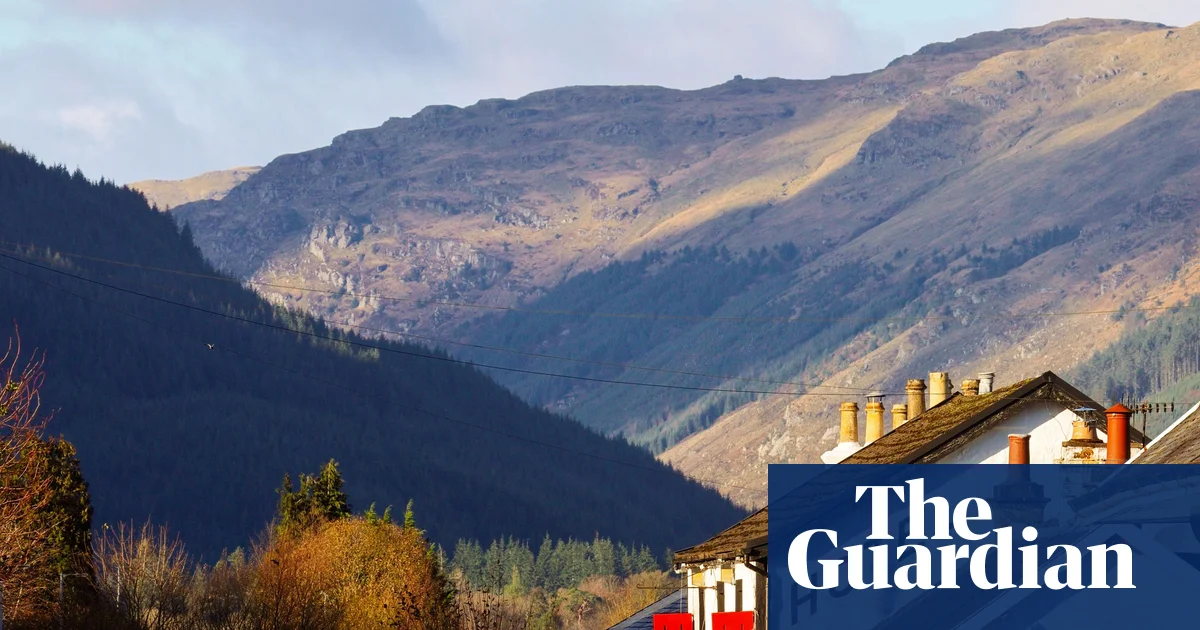‘It’s a social hub more than a pub’: Scottish community reopens its local inn just in time for Christmas | Travel
It’s opening night at Scotland’s newest community pub, Oakbank Inn, which sits on the Holy Loch in the village of Sandbank, Argyll. It’s a clear, cold night, and the inn couldn’t look more welcoming: a cosy glow from within the historic building, the Cowal hills beyond. The Christmas lights are twinkling, the glasses are charged and there’s a palpable sense of goodwill, cheer, and plenty of pride in the air. By 6pm, it’s buzzing. Locals are already propping up the bar as a stylish woman sweeps in and bags the last table. She is Debbie Rycroft, a local haberdasher. “A pint in my own local,” she smiles happily, relishing a toast with her husband and equally dapper 19-year-old son.
First-night hiccups are limited to a wonky nozzle and a brief worry about a small radiator leak. “How many people to fix a heater?” quips someone as a line of concerned faces survey the scene. Almost immediately, a punter walks in with a radiator key. All sorted. Someone orders a Guinness; the bartender pulls it off. A two-part pour, pitchblack perfection with a balanced, creamy top. Good things come to those who wait? Well, this one’s been three years in the making.
The Oakbank, a landmark building at the heart of Sandbank for the last 160 years, closed at the end of 2022, like so many businesses that struggled in the wake of the Covid pandemic. Next came the closure of the nearby Holy Loch inn. The village was left without a pub – a huge loss for a rural community.
A group of locals got together in early 2023, formed a committee, chaired by Sue McKillop, and began the long slog to buy the Oakbank. “It’s been an uphill struggle,” says Ian MacNaughton, another founding committee member. “I just didn’t think the hill would be so steep!” Now retired, MacNaughton remembers sneaking into the Oakbank for a pint, aged 16. These days he’s learning about compliance laws. “We must do everything right.”
After an initial rejection, their persistence finally paid off last December with the award of a Scottish Land grant just shy of £150,000, covering most of the purchase price. In January, McKillop advertised shares, raising more than £23,000 and an “inspiring amount of enthusiasm” from locals. By April this year, they had the keys. It’s been nonstop ever since up until opening night last Saturday, she says.
While the shares didn’t reach the £90,000 target, people have contributed “thousands of volunteer hours” to get the place ready, Dawn Petherick tells me. They shifted and updated the bar, now an airy sky blue, while the old wood burner’s still there but “needing work”. Another one for the list. And Petherick’s list is long. She is Oakbank’s development officer, a fixed-term post funded by the initial grant, and, like everyone else involved, she’s been busy all year.
The Oakbank has been running pop-ups, workshops and charity mornings during the refurbishment. More events are being added all the time. “Whatever the community wants – knitting groups, book clubs, exhibitions, ‘sober nights’ – it should be a hub more than a pub,” says Petherick. “Somewhere to alleviate social isolation.”
And that is needed more than ever. Yet another local pub, the Strone Inn across the bay, is set to close at the end of the year. Like many local business owners, Stephen Mitchell is supportive of the Oakbank project. “Fair play to them,” he says. “It’s taken them three years, so it’s a real result.” But, he warns, “the hard work starts now as things are really tough”.
McKillop agrees. “It’s exciting but a wee bit scary,” she says. “We are under no illusions as to the challenges that lie ahead. Like any pub venue, we will need to keep innovating in order to survive.” But she can take comfort from recent figures; community pubs are doing well. According to the charity Plunkett UK, community-owned businesses are “highly resilient”, with a five-year survival rate of 98%.
“We’re delighted that the Oakbank Community Inn is opening under community ownership,” says James Alcock, Plunkett UK’s chief executive. “We see time and again how saving local assets like village pubs protects vital services and social spaces, helping to reduce isolation and strengthen communities.”
Future plans include refurbishing accommodation upstairs, a studio/gallery space in the adjoining cottage and renovating the commercial kitchen. In a nice piece of alchemy, the pub sits opposite Sandbank’s community-owned garden, so its polytunnels and raised beds will be nurturing hyper-local vegetables destined for that kitchen.
But the best thing about the Oakbank is the bit you see last. At the back of the bar, big glass doors offer views across the Holy Loch. It’s inaccessible now, but outside the doors, a grassy verge leads to the Holy Loch marina below. It has its own regulars hauling out on the slipway – giant Atlantic grey seals. With neighbours like that, you can see why McKillop has ambitious plans. “We’re going to rebuild the rotten deck and make a bridge to connect to the marina,” she says.
That should please boat-owners Tony, Rob and Alan, enjoying a pint beside the bar. “Sailors don’t like going places where you can’t go to a pub,” says Rob. “And Sandbank’s had absolutely nothing to offer.”
“Hang on,” offers Tony. “It’s got a lot of history.”
But Rob’s having none of it. “You can’t drink a pint of history.”

